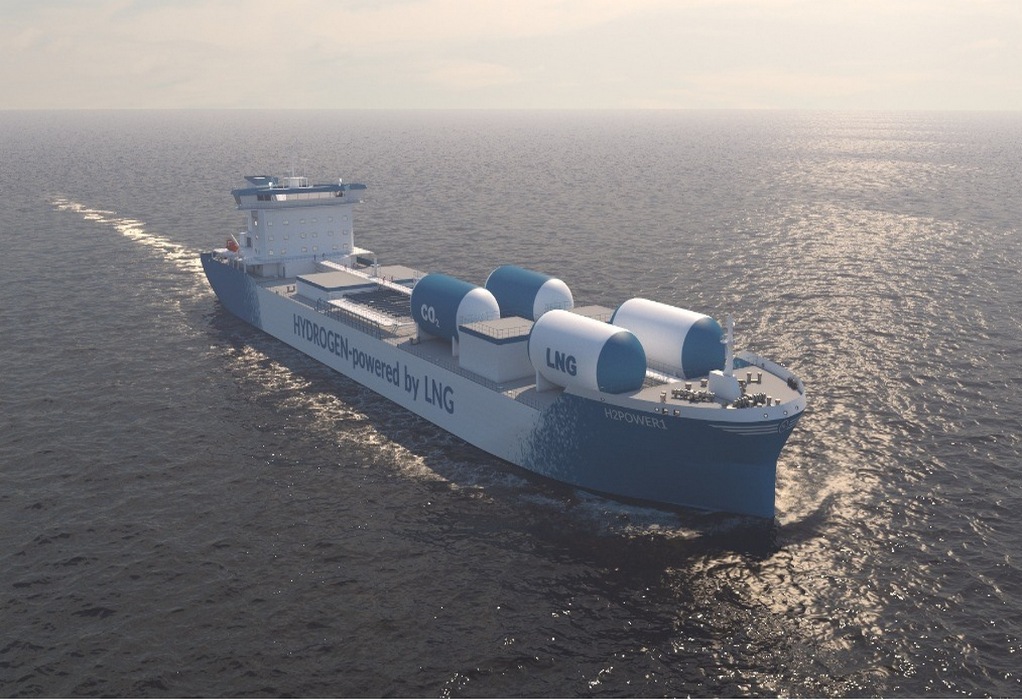An MR tanker, designed by Sweden’s FKAB Marine Design, has been granted approval in principle (AiP) by Italian classification society RINA, claimed as the first AiP of a design using currently viable technology and fuels that achieves IMO 2050 targets. Conceived by the class society and designed by FKAB, the propulsion is based on combining LNG as the ship’s fuel with steam to produce hydrogen and CO2. The MR LNG/hydrogen-fuelled vessel is the result of a joint project with ABB and Greek hydrogen tech firm Helbio.
The MR tanker design is based on combining LNG with steam in a Helbio gas reformer to split LNG molecules into hydrogen and CO2. Hydrogen is then directly used to fuel the internal combustion engines and fuel cells in a hybrid marine power system by ABB. The CO2 is captured by splitting the LNG molecules, rather than from exhaust gas. The concept will not require onshore carbon disposal technology to be available before 2032. CO2 is liquefied by the cryogenic steam from the LNG and can be used as the inert gas for the tanker. No additional bunkering, aside from normal LNG, is required and the hydrogen produced can be used to power the main engine, or fuel cells, or a hybrid of the two. The AiP covers the hybrid option, RINA explained.
Antonios Trakakis, Greece marine technical director at RINA, said: “To meet CO2 reduction targets, shipping is faced with the challenge of having solutions which either rely on fossil fuels, but which still require technology to mature, or on new, zero carbon fuels, the availability of which is still far from being guaranteed. This new design enables the use of hydrogen as a fuel today without the need for bunkering and storage on board and exceeds IMO 2050 targets for 70% reduction of carbon intensity.”
The class society said that by using this design, hydrogen usage can be progressively increased to maintain a top Carbon Intensity Index (CII) rating throughout the life of the ship, reducing CO2 emissions in a parallel slope with the applicable regulations. “The ship can meet full decarbonisation targets by either running the engine on 100% hydrogen, or by producing all the power needed by fuel cells, allowing the owner to decide the rate of CO2 reduction.”
“Now that the concept has been brought to the real world through an immediately applicable CII A rated design, this opens the door to reduce emissions in a much shorter timeframe. The AiP is for an MR tanker, but the technology can be applied to a wide range of vessel types and sizes,” Trakakis concluded.
Source: Splash247
Tags: ABB, FKAB, Fossil Fuels, Helibo, IMO, MR tanker, RINA

Recent Posts
DPIIT promotes green logistics industry
Petronet LNG reports record volumes
TotalEnergies buys stake in wind farm to produce green hydrogen
Ports of Indiana, Port of Antwerp-Bruges partner on green shipping
Bhutan moves towards green transition
GCMD completes biofuel supply chain trials with Hapag-Lloyd
Airbus partners with Avolon on hydrogen aviation
Nuclear power transition more safe option for decarbonisation than coal